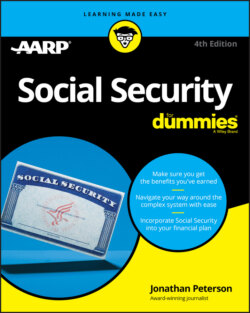Читать книгу Social Security For Dummies - Peterson Jonathan, Jonathan Peterson - Страница 53
When the Need Is Great: Supplemental Security Income
ОглавлениеSupplemental Security Income (SSI) targets the neediest Americans — specifically, those who are 65 or older, blind, or disabled — with cash payments to help them survive. Its benefits are designed to pay for life’s necessities: food, clothing, and shelter. SSI also has child disability benefits for children under 18.
The SSA runs SSI, but SSI isn’t considered a Social Security benefit. Instead, it’s a cash assistance or welfare program that you qualify for based on financial need. This is a big difference from basic Social Security benefits, including SSDI (see the preceding section).
You contribute to the basic Social Security programs, including SSDI, through the payroll tax, and then you qualify for benefits you’ve earned through work credits that add up over time.
SSI, on the other hand, is financed by general tax dollars. People don’t need to build up work credits or demonstrate a work history to qualify. They just have to demonstrate an extreme level of need. The rules on income and assets are strict, however. To get SSI in most states, people must earn below the federal payment standard of $783 per month for an individual and $1,175 per month for a couple (as of 2020). Assets (the things people own, such as cash or property other than your home) generally can’t exceed $2,000 in value for an individual and $3,000 for a couple.
Social Security is social insurance for people of all income levels. SSI is an assistance program for people with very little income.
